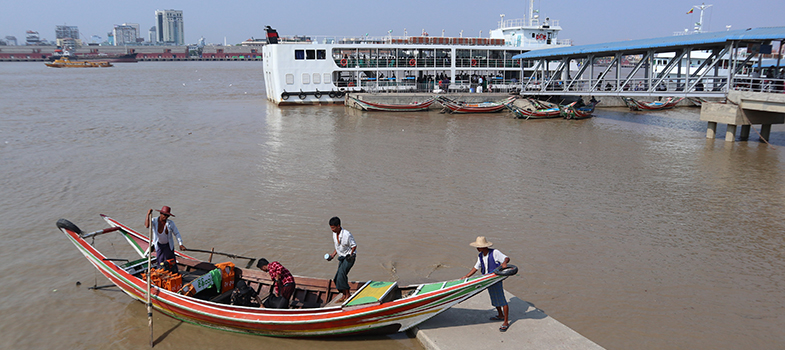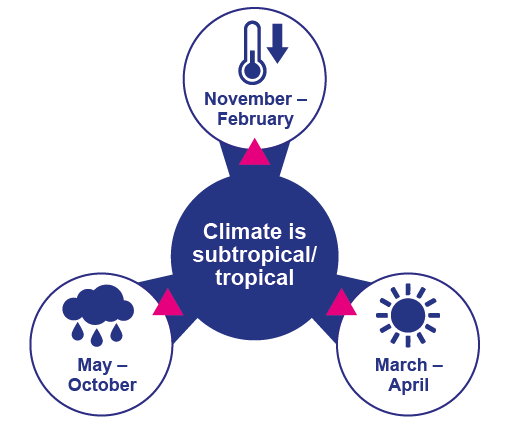1.6 Seasonal Variation of Water Resources in Myanmar
A large portion of Myanmar lies between the Tropic of Cancer and the Equator and the entirety of the country lies in the monsoon region of Asia. Myanmar is a diverse country that exhibits different challenges. The climate is subtropical/tropical and has three seasons.
The cool winter season is followed by a hot summer season and the rainy season is dominated by the southwest monsoon.
Temperatures are increasing while the length of the wet season and monsoon are decreasing. Rainfall has also become more erratic (Tung OO et.al, 2020). Myanmar’s climate pattern is highly influenced by the monsoon. About 95% of its annual national rainfall is received from the Southwest Monsoon, from May to October, with spatial and temporal variability.
Seasonal temperatures vary throughout most of Myanmar. In the Central Dry Zone temperatures range from a maximum of 40–43 ºC in the hot/dry season to 10–15 ºC in the cool/relatively dry season and decrease to -1ºC or 0ºC at times in the highlands, but do not vary much in the south.
A shorter period of Monsoon, due to late onset and early withdrawal, will result in large quantities of rain falling over short periods, leading to flooding, contamination of water resources, erosion and more limited replenishment of waterways. Saliniation is also a threat in coastal areas. The progressive melting of glaciers may have an impact on the Himalayan region of Myanmar, which provides large quantities of water to many parts of the country.
Question 10
Using the following two lists, match each numbered item with the correct letter.
Cool and dry
Hot and wet
a.If you were studying this course in the Central Dry Zone of Myanmar in December, what would you expect the weather to be like?
b.If you were studying this course in the delta region in the south of Myanmar in June, what would you expect the weather to be like?
- 1 = a
- 2 = b
1.5 Managing the availability of water resources in Myanmar

